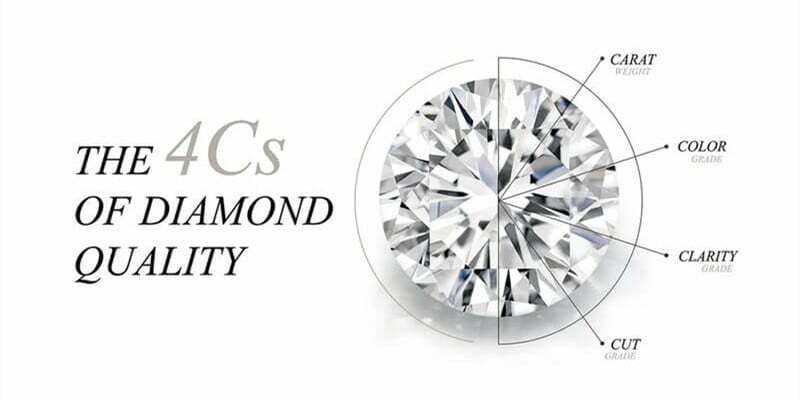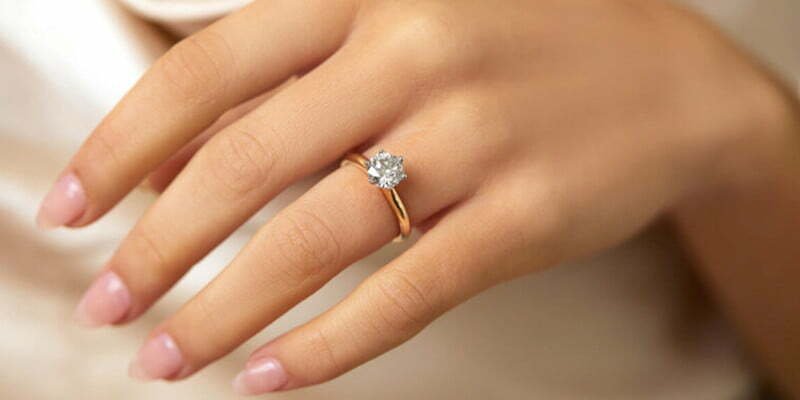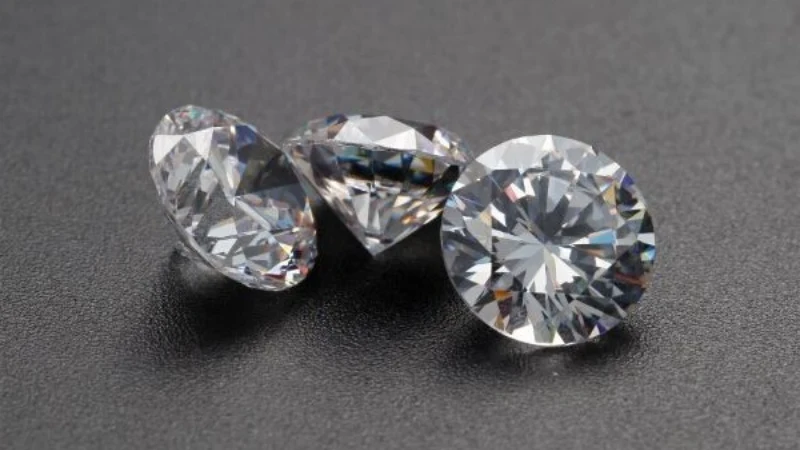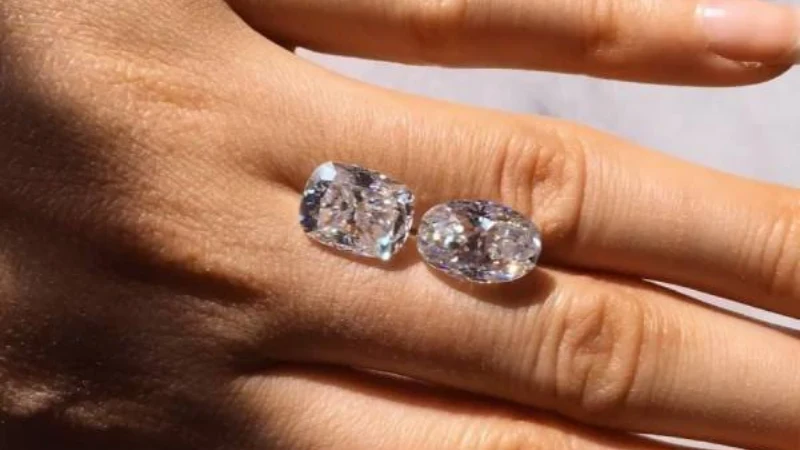4C standard carat weight

Diamonds and other gemstones are weighed in metric carats: one carat is approximately equal to 0.2 grams, which is equivalent to the weight of a paper clip. (Do not confuse carat with K (Karat), for example, “18K gold” refers to gold purity).
Just as one U.S. dollar is divided into 100 cents, one carat is divided into 100 cents. For example, a 50-point diamond weighs 0.50 carats. However, even if two diamonds have the same weight, their value may be very different. Because the value of a diamond also depends on other criteria in the 4C standard: clarity, color, and cut. Most diamonds set in fine jewelry are less than one carat in weight.
Because even the cost of a few tenths of a carat can make a considerable difference, accurate diamond weight is crucial. In the diamond industry, weight is usually measured in units of one kilogram and one-hundredth of a carat. But for diamonds above 1 carat, it is expressed in carat numbers and percentages. (For example, a 1.08-carat gem would be described as “1.08 carat” or “1.08 carat”.)
4C Standard-Clarity
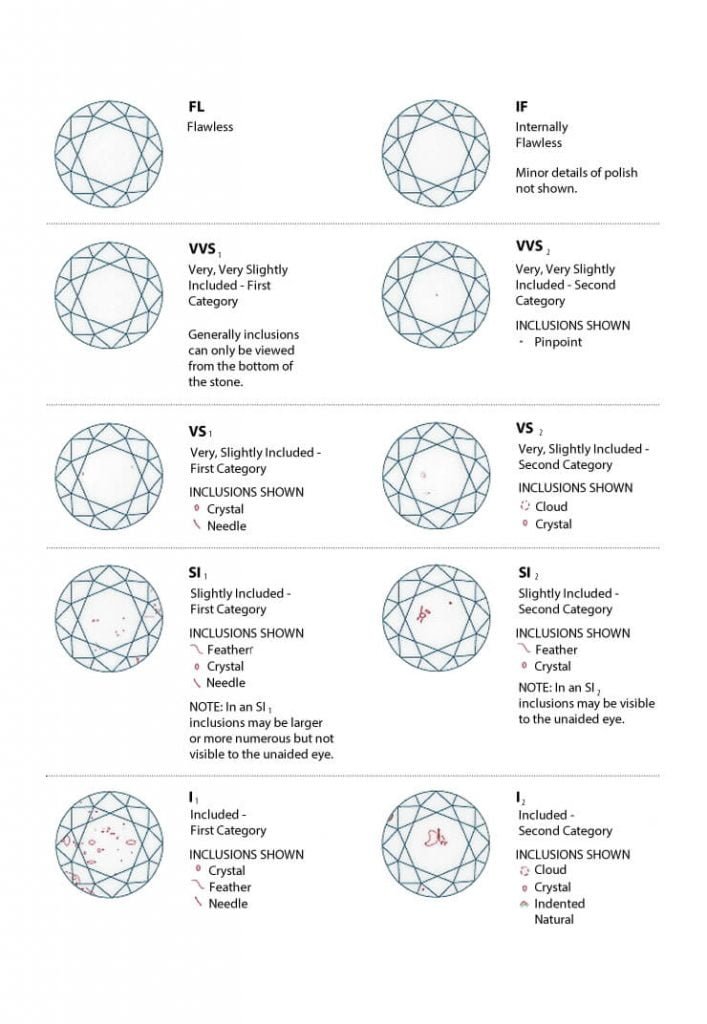
Because diamonds are formed under the high temperature and high pressure of the earth, they often have unique birthmarks. The inside of the diamond is called inclusions, and the ones on the surface of the diamond are called surface features.
Diamond clarity refers to the degree to which it has no inclusions and surface features. Diamonds without these birthmarks are very rare, and their rarity will affect the value of the diamond. Using the GIA International Diamond Grading System™, diamonds are assigned a clarity grade, from flawless (FL) to diamonds with obvious inclusions (I3).
Every diamond is unique. At 10x magnification, no diamond is absolutely perfect, although some are close to perfect. Flawless diamonds are very rare. Most jewelers have never seen it.
The Gemological Institute of America clarity standard is divided into 11 grades, most of the diamonds are VS (slightly included) or SI (slightly included) categories. When determining the clarity level, the GIA system will consider the size, type, location, color, or visibility, as well as the number of clarity features visible at 10x magnification.
Flawless (FL)-When viewed under a 10x magnifying glass, the diamond has no inclusions or surface features
Internally Flawless (IF)-Observed under a 10x magnifying glass, there are no visible inclusions, only visible surface features, which can only be seen by professional graders
Very slight inclusion level (VVS1 and VVS2)-Observed under a 10x magnifying glass, it is difficult for even professional graders to see inclusions
Slight inclusion level (VS1 and VS2)-Observed under a 10x magnifying glass, there are tiny inclusions, ranging from difficult to see by professional graders to easier to see
Micro-inclusion level (SI1 and SI2)-Observe under 10 times magnifying glass, professional graders can see the inclusions
Inclusion level (I1, I2, and I3)-Inclusions are clearly visible under a 10x magnifying glass and may affect transparency and brightness.
4C Standard-Color

The color of the diamond cannot be observed with the naked eye. The value of a diamond depends on how close it is to colorless, the closer it is to colorless, the higher its value. (The exception is colored diamonds, such as pink and blue outside the color range.) Most diamonds in jewelry stores are colorless to nearly colorless, with a little yellow or brown.
GIA’s diamond color grade is the industry standard. The color grade starts with the letter D (representing colorless) and is arranged to the letter Z (light yellow or brown, the color gradually darkens). Each letter grade has a clearly defined range of color appearance. The color of the diamond is graded by comparing it with the colorimetric stone under controlled lighting and precise observation conditions.
4C Standard-Cut

Cut quality is the factor that determines the fire, sparkle, and brightness of a diamond. For a particular diamond to have unique charm and beauty, the cut quality is the most important.
For standard round brilliant diamonds with color grades ranging from D to Z, the GIA diamond cut grading system is based on an evaluation of seven elements. The first three elements involve appearance, namely, bright light (the sum of the amount of light reflected by the diamond), fire (colorful light emitted by the dispersion), and flash (the distribution of light and dark areas of the moving diamond and the flicker of light). The remaining four elements involve diamond design and craftsmanship, namely weight ratio, firmness, polish, and symmetry.
Considering the relative importance of each element to the overall cut quality of a diamond, in the GIA system, each element is evaluated separately. Based on the relative range of “excellent” to “bad”, each cut grade represents a series of proportional combinations and positive appearance. Many combinations of different proportions can make diamonds show fascinating charm.
For example, take a look at the side view of a standard round brilliant cut. The main components from top to bottom are the crown, waist, and pavilion. Round brilliant-cut diamonds have 57 or 58 facets. The 58th facet is a small flat surface located at the bottom of the pavilion (called the culet). The large, flat facet on the top is called the tabletop. The diamond ratio refers to the relationship between tabletop size, crown angle, and pavilion depth. It should be noted that the combination of diamond proportions may be very wide, and these will ultimately affect the interaction between the diamond and the light, and the attractiveness of the diamond to the viewer.
Do you want to know more about 4C of diamonds? Click on the link below to learn more.

